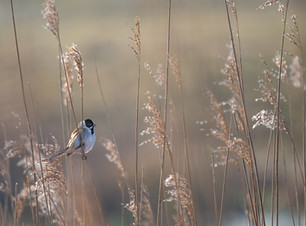
BIODIVERSITY
This page outlines concerns about loss of habitat and loss of biodiversity that will be the result of expanding quarrying into the Lucklawhill Local Wildlife Site (renamed as a Local Nature Conservation Site (LNCS) in 2024). Our local habitats have already been designated as special by Fife Council when the Local Wildlife Site was notified in 1998. Part of the Local Wildlife Site has already been lost to the expansion of quarrying.
THE LINKS BETWEEN GEOLOGY, SOILS, PLANTS + ANIMALS

Lucklawhill is composed of felsite, an acidic volcanic rock. Over time as the rock has broken down and weathered the overlying soils which formed were also acidic. The soil cover on Lucklawhill is mostly thin and there are natural rock outcrops at several sites. The acid soils and exposed site mean that trees are small even when old and they are interspersed with heath, bracken and grassland.
The mosiac of habitats within the Local Wildlife Site are dominated by unimproved acid grassland, acid dry dwarf shrub heath and dry heath/acid grassland mosaic. They are all priority habitats on the Scottish Biodiversity List. These plants support wildlife that depend on specific foodplants such as Green Hairstreak butterflies whose caterpillars are dependent on blaeberry.
WHAT HAS BEEN LOST ALREADY

The Local Wildlife Site has been reduced by around 1.1 ha since designation in 1998 by quarry expansion. Expansion at the north edge of the quarry has eaten into the important habitat and brought the north edge of the quarry closer to the heart of the Local Wildlife Site.
The proposed quarry extension will take a further large chunk out of the Local Wildlife Site and result in fragmented habitat. The proposed expansion would remove another 2ha of priority habitat and 1ha of agricultural land.
IMPORTANCE OF LUCKLAWHILL FOR WILDLIFE
The top of Lucklawhill is a Fife Council listed Local Wildlife Site. It is listed because it has a...
“good range of semi-natural habitat which supports a diverse population of plants, insects and birds.”
Local Wildlife Sites Statement WS57
PLANTS
.jpg)
-
The site has a good range of moorland plants including heather, blaeberry (Vaccinium myrtillus) and bell heather. These plants are rare in north east Fife.
-
The site has an excellent range of woodland plant species with over 40 species recorded.
-
The site has a good assemblage of grassland species with around 30 species recorded.
-
Plants of particular interest are cowberry (Vaccinium vitis-idaea), orpine (Hylotelephium telephium) and chickweed wintergreen (Lysimachia europaea) all of which are scarce in Fife.




RED SQUIRRELS
Red squirrels, a priority species on the Scottish Biodiversity List, are listed as needing conservation action and protection from negative impacts. Red squirrels are recorded from the woods and gardens surrounding the quarry and are likely to use the proposed expansion area as a travel corridor.

BADGERS
Badgers are known to live around Lucklawhill and to use the hill for foraging and as travel corridors. A satellite sett close to the quarry confirms their use of the local area.

BIRDS


Lucklawhill is an important site for observing raptors. Quarry development has already adversely affected raptors. Peregrines (a red list species which is at risk of extinction) that had nested in the quarry left the site a few years after the last quarry extension. 73 bird species have been recorded within 1km of the mast at the top of Lucklawhill. Of these 22 are Scottish Biodiversity List species. The site holds resident populations of birds which are on the Birds of Conservation Concern 2021.
Species on the red list which have been recorded on Lucklawhill or within 1km of the mast at the top of the hill include:
-
Cuckoo
-
Greenfinch
-
Grey Partridge
-
House Martin
-
House Sparrow
-
Lapwing
-
Linnet
-
Mistle Thrush
-
Skylark
-
Spotted Flycatcher
-
Starling
-
Swift
-
Tree Pipit
-
Tree Sparrow
-
Woodcock
-
Yellowhammer
MOTHS

The day-flying Latticed heath moth which is a priority Biodiversity Action Plan (BAP) species has been recorded on the heathland at the top of the hill: its abundance and distribution show major long-term declines. Light trapping during 2024 at the top of the hill
has increased the number of moth species on Lucklawhill to over 300. Twenty-eight of these are BAP and Scottish Biodiversity List priority species. Key Species include: Angle-striped sallow (Enargia paleacea), Bilberry tortrix (Aphelia viburnana), Grapholita tenebrosana, Apotomis sororculana, Dotted carpet (Alcis jubata), Suspected (Parastichtis suspecta).
BUTTERFLIES

The expansion will destroy habitat occupied by the Small Heath butterfly a UK Biodiversity Action Plan (BAP) and Scottish Biodiversity List species which has had a highly significant decline in abundance since 1976. It has also had a highly significant decline in distribution since 1971 (The state of the UK’s butterflies 2022). The Wall butterfly which has recently colonised Lucklawhill is a UK BAP and Scottish Biodiversity List species. Wall are expanding north into Fife with the first record from Lucklawhill within the Local Wildlife Site near the mast at the top of the hill in 2022. Further Wall records were reported in 2023 and 2024. The first record on Lucklawhill of Small Pearl-bordered Fritillary another UK BAP species was made in 2024.. The Green Hairstreak butterfly has had a significant decline in abundance since 1976 and a decline in distribution since 1977 (The state of the UK’s butterflies 2022). There is a small colony within the Local Wildlife Site which will be impacted by the expansion zone. This is a species that is on the wing for only a few weeks each spring and is scarce in Fife being confined to areas with blaeberry which is the preferred larval foodplant.
COMMONLY SEEN WILDLIFE

Fox

Buzzard

Wood Mouse

Grey Partridge

Roe Deer

Barn Owl

Red Squirrel

Raven

Badger

Tawny Owl

Green Hairstreak Butterfly












